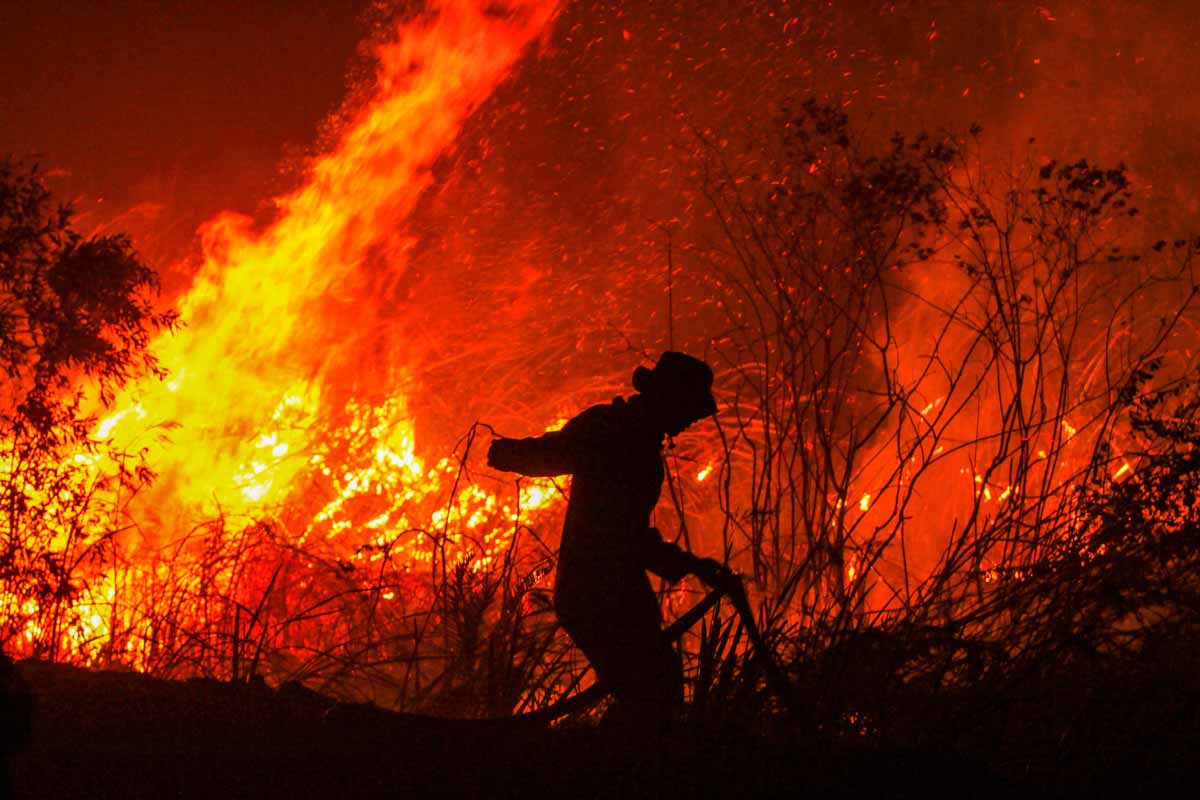The number of blazes in Indonesia’s rainforests has jumped sharply, satellite data showed Thursday, spreading smog across Southeast Asia and adding to concerns about the impact of increasing wildfire outbreaks worldwide on global warming.
Illegal blazes to clear land for agricultural plantations have been raging on Sumatra and Borneo islands, with Indonesia deploying water-bombing helicopters and thousands of security forces to tackle them.
It is just the latest such outbreak globally – huge blazes have torn through the Amazon in South America while bushfires are sweeping across eastern Australia in an unusually ferocious and early start to the wildfire season.
Indonesia’s forest fires are an annual problem but have been worsened this year by particularly dry weather, and in recent days sent toxic smog floating over Malaysia and triggered a diplomatic row.
The number of “hotspots” – areas of intense heat detected by satellite which indicate a high chance of fire – jumped sharply in Indonesia on Wednesday, according to the Singapore-based ASEAN Specialised Meteorological Centre.
There were 1,619 hotspots detected on the Indonesian part of Borneo and Sumatra up from 861 a day earlier, according to a tally from the centre, which monitors forest fires and smog outbreaks.
In hard-hit Riau province on Sumatra, firefighters were battling round the clock through charred forests as they sought to extinguish blazes belching thick white smog.
Provincial capital Pekanbaru was blanketed in dense smoke, leaving the sky dark even at midday. Residents sought to go about their daily lives as usual, with many wearing only rudimentary face masks.
Kiki Taufik, a forests campaigner with Greenpeace in Indonesia, told media there has been little rain in the past fortnight, particularly on Indonesian Borneo which saw the sharpest increase in hotspots.
Borneo is shared between Indonesia, Malaysia and Brunei.
Burning issue
Taufik saw similarities between the blazes in Indonesia and those in the Amazon, where farmers also start fires to clear land for agriculture.
“This should remind people we are facing a climate crisis,” he said of the recent fires around the world.
“Industries are looking to expand plantations using fires.”
And he warned Indonesia’s blazes would add to the sprawling archipelago’s climate-damaging emissions, already among the highest in the world.
In 2015 Indonesia suffered its worst forest fires for about two decades, which dramatically increased its greenhouse gas emissions.
Diplomatic tensions were also rising as Malaysian Environment Minister Yeo Bee Yin accused her Indonesian counterpart of being “in denial”, after Jakarta insisted fires in Malaysia had caused the smog there.
“Let the data speak for itself,” she said in a Facebook post, indicating figures from the ASEAN centre which showed only a handful of hotspots in Malaysia compared to the hundreds in Indonesia.
Malaysian Prime Minister Mahathir Mohamad will write to Indonesian President Joko Widodo raising concerns about the haze, she said.
Indonesian Environment Minister Siti Nurbaya Bakar hit back Wednesday, telling AFP that “hotspots are not only found in Indonesia, but also in Sarawak (on Malaysian Borneo) and peninsular Malaysia”.
“We are not standing idly by,” she added.
Indonesian personnel have been struggling to tame the blazes as many burn underground in carbon-rich peat, which has been cleared across vast areas of the country for plantations.
After being cleared and drained of water, peat is highly combustible and hard to extinguish once ablaze.
There have been some outbreaks of fire in the Malaysian part of Borneo. Drone footage showed smoke rising from charcoal grey patches of smouldering earth, surrounded by pristine forest. - AFP
